When it’s too Hot to Mow Your Lawn!
A healthy lawn provides you and your family with a green, lush and welcoming environment. However, when temperatures rise and the harsh summer sun beats down on your lawn, the ...

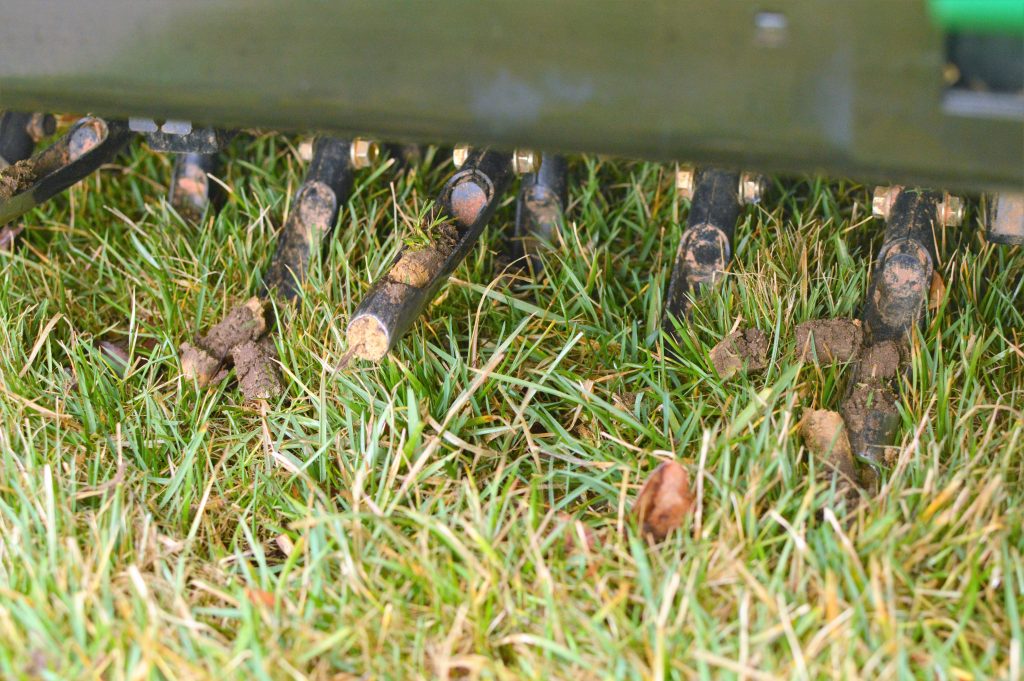 Aerating lawns is often required when soils become compacted and can no longer provide the free flow of water and oxygen required for the lawn to survive. The most popular and most effective method of aerating lawns for homeowners is to use a lawn coring machine.
Aerating lawns is often required when soils become compacted and can no longer provide the free flow of water and oxygen required for the lawn to survive. The most popular and most effective method of aerating lawns for homeowners is to use a lawn coring machine.
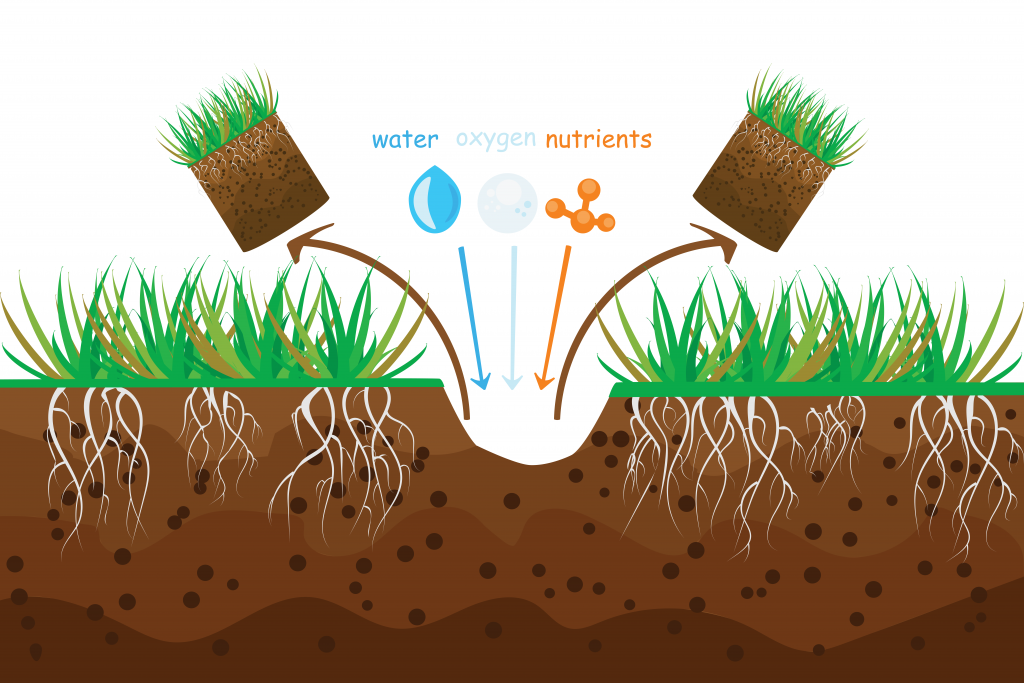 Lawn coring is a method of lawn aeration that involves punching holes into your lawn, and removing plugs of grass to improve the health and vigour of your lawn.
Lawn coring is a method of lawn aeration that involves punching holes into your lawn, and removing plugs of grass to improve the health and vigour of your lawn.
A lawn corer works by punching holes into your lawn and the soil beneath with its hollow tines. As the tines pull out of the soil, they remove plugs of soil, thatch and lawn, leaving open holes in the lawn’s surface which allow it to receive more air, sunshine and water.
Coring is useful for dealing with a range of issues, including compaction and thatch, as it allows water, air, fertiliser and other organic material to penetrate the grass, and deliver nutrients to the roots, where it is required.
However, lawn coring does require a specialised piece of equipment with hollow tines, or spikes, that dig into the soil. When pushed into the soil, the tines fill with soil, which is extracted as small plugs when the tines are pulled out, leaving a series of holes in the soil.
Coring a lawn is not a difficult job, provided you have the right equipment. If you feel up to the challenge, you can hire a machine and do it yourself, or call out a contractor to do the job.
Coring your lawn is the ultimate way to address serious compaction issues in your lawn.
Soil compaction is common in clay soils and can be exacerbated by heavy traffic. Typical signs of compaction include poor drainage and waterlogging, and an increased likelihood of pests and diseases.
If not addressed, compaction can prevent water and nutrition from reaching the root zone of your lawn, compromising the health and vigour of your lawn.
Unlike spike aeration, where solid tines (like a rake) are spiked into the ground, but no soil is removed, core aeration tackles the cause of compaction by reducing the overall density of the soil.
Using the right tools to core your lawn is important.
For smaller areas with moderate compaction, you can use a manual coring tool to achieve the desired results. Usually featuring 2-3 tubular tines mounted on the end of a long handle, manual lawn aerators are available at most hardware stores. Affordable and easy to use, they are more labour intensive and result in a less consistent distribution of holes than a mechanical core aerator.
If you have a large lawn, or you are dealing with highly compacted areas, a mechanical lawn coring machine may be a better choice. Just like lawnmowers, there are many different models – including self-propelled models – at differing price points to suit your circumstances. Check the number and type of tines as a point of comparison. If purchasing a coring machine outright is too big of an investment, there are companies that hire out core aerators for a day or weekend.
The best time to core your lawn is during the warmer months, from late spring to early autumn, when your lawn is actively growing. This will allow it to recover quickly.
Ideally, your lawn should be well hydrated, but not overly wet, when you undertake core aeration. You can leave the soil plugs on the surface to break down – this will return valuable nutrition and organic matter back into your soils.
Lawn coring should form part of your annual lawn maintenance routine, to be carried out each year in spring. High traffic areas, such as footy ovals or public parks, would aerate their turf more regularly, but home gardens are unlikely to gain many benefits from frequent coring.
Core aeration should be followed by a regimen of fertiliser, ample watering and general lawn care to promote vigorous regrowth.
As always, preparation is the key to success, and coring a lawn is no different. These preparation points should be done the day before the lawn coring occurs.
Purchase wetting agents and a quality lawn fertiliser.
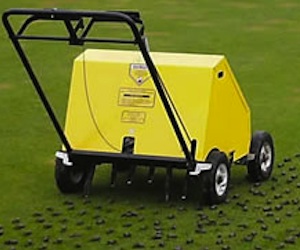 Lawn coring is relatively simple. The machine is usually rather large and can be cumbersome, but in theory, it is simply guided over the lawn’s surface, and its tines do the work punching holes into the turf, leaving its grass plugs in its wake.
Lawn coring is relatively simple. The machine is usually rather large and can be cumbersome, but in theory, it is simply guided over the lawn’s surface, and its tines do the work punching holes into the turf, leaving its grass plugs in its wake.
You don’t want to destroy your sprinklers, so the flags you already put down will mark their positions and guide you around them effectively.
There’s no way we can provide instructions for all coring machines, so ensure you get good instructions from the hire shop for that particular machine being used. For safety, be sure to use steel-capped boots.
Once the coring is finished there will be a rather large mess of soil and turf plugs sitting on top of the lawn. These can be dealt with in two different ways:
Once the lawn has been aerated, it’s time to take advantage of this unique opportunity and apply wetting agents and fertiliser directly into the soil and into the roots of the lawn.
Wetting agents and fertiliser should be applied now and then watered into the soil. This will have the positive effect of increasing the free flow of water through to the soil as well as moving the nutrients directly down to the roots of the lawn.
If the soil has a heavy clay component, then some Gypsum Clay Breaker should also be applied along with the Fertiliser and Wetting Agents. The Gypsum will move straight into the soil to break up the clay. The best time to apply Gypsum is straight after lawn coring.
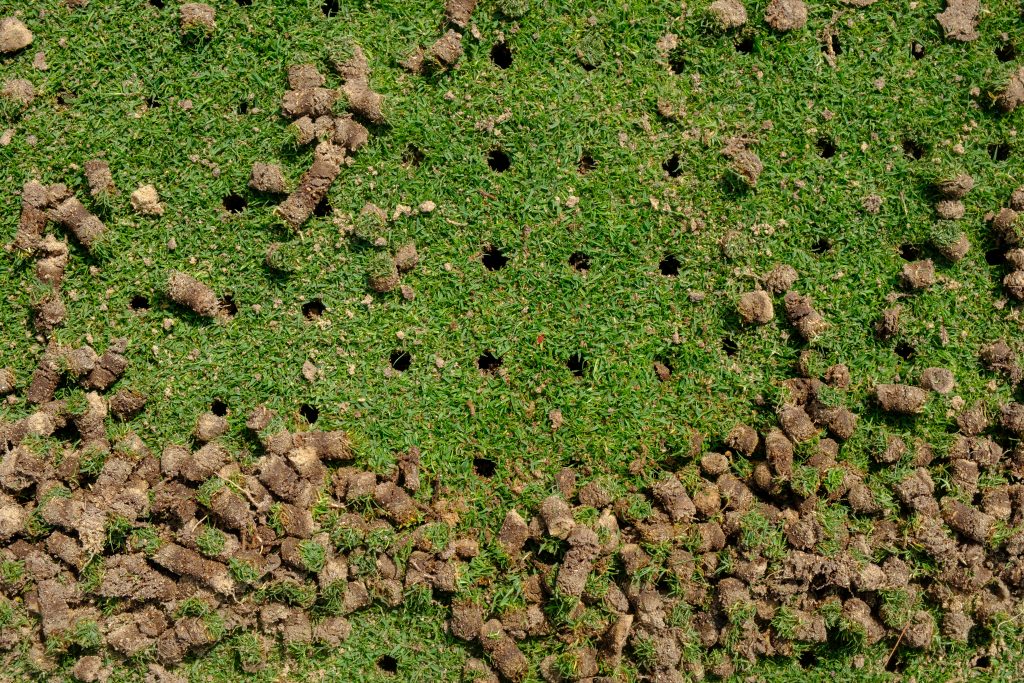 With the lawn coring job finished, and the fertiliser, wetting agents and gypsum are applied and watered in, you may now notice that the lawn remains covered with holes.
With the lawn coring job finished, and the fertiliser, wetting agents and gypsum are applied and watered in, you may now notice that the lawn remains covered with holes.
The best thing to do is leave the holes open, this will give the lawn the greatest benefit of water and oxygen flow for as long a period of time as possible. The holes will fill up with new roots and cover themselves with new lawn growth very quickly.
If the lawn is often compacted, waterlogged or is heavy clay-based then the holes can be filled in with clean free-flowing sand. This will aid the lawn for a very long time as it continues to allow water and oxygen to flow freely in the otherwise compacted soil.
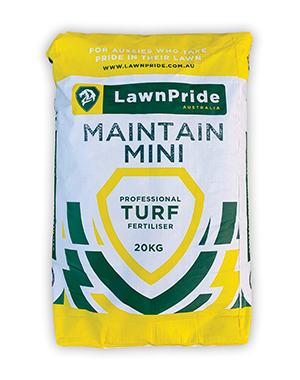
Lawn Pride Maintain Mini 26-2-9 + 3.4 Fe 20kg is one of the most popular granular all-round lawn fertilisers on the market with the active ingredients of Nitrogen (N – 26), Phosphorus (P – 2), Potassium(K – 9) and Iron (Fe – 3.4). Suitable for Zoysia, Kikuyu, Couch and Buffalo grasses. Always read the safety directions and instructions on the product label before use.
SHOP NOW
LawnPride HydraMaxx 2L Hose On is an ideal liquid Soil Wetting Agent used when watering is restricted and easily clicks onto the end of your hose. Suitable for use on Zoysia, Kikuyu, Couch and Buffalo grasses. Always read the safety directions and instructions on the product label before use.
SHOP NOW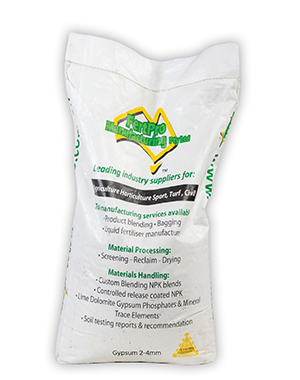
Granular Gypsum Coarse Grade 25kg is an efficient Soil Amendment that is used to correct soil calcium levels and assist in soil flocculation. Suitable for Zoysia, Kikuyu, Couch and Buffalo grasses. Always read the safety directions and instructions on the product label before use.
SHOP NOWCoring your lawn every year is an effective way to rejuvenate the health of your lawn, and address problems like soil compaction, waterlogging and thatch. While you can hire a contractor to core your lawn, doing it yourself is easy, provided you have the right equipment. Essential to successful coring is preparation and making sure to treat your lawn with a feed and good watering after you’ve finished.
To maintain a healthy, vibrant lawn, browse our range of leading maintenance products at myhomeTURF’s online store.